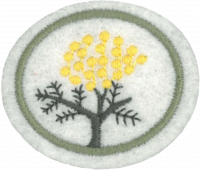Difference between revisions of "AY Honors/Wattles/Requirements"
Jomegat bot (talk | contribs) m (Protected "AY Honor Wattles Requirements": Bot: Protecting all pages from category .*/e[sn] ([Move=Allow only administrators] (indefinite) [Edit=Allow only administrators] (indefinite))) |
Jomegat bot (talk | contribs) (Bot: Automated import of articles *** existing text overwritten ***) |
||
| Line 1: | Line 1: | ||
| − | + | {{HonorSubpage}} | |
| + | |||
| − | |||
<section begin=Body /> | <section begin=Body /> | ||
| Line 48: | Line 48: | ||
[[Category:Honor Requirements|{{#titleparts:{{PAGENAME}}|1|2}}]] | [[Category:Honor Requirements|{{#titleparts:{{PAGENAME}}|1|2}}]] | ||
[[Category:Honor Requirements Revision 3|{{#titleparts:{{PAGENAME}}|1|2}}]] | [[Category:Honor Requirements Revision 3|{{#titleparts:{{PAGENAME}}|1|2}}]] | ||
| − | </translate></noinclude> | + | <noinclude></translate></noinclude> |
| + | {{CloseHonorPage}} | ||
Revision as of 05:12, 19 March 2021
1. What is the approximate number of named varieties of wattles in Australia?
2. a. What are phyllodes?
- b. What work do they do for the plant?
- c. Why are phyllodes so important in the study of acacias?
3. How are acacias classified into two major groups?
4. How does the shape of the seed pod and the way the seeds lie in the pod help in identification?
5. How many acacias in your state have true leaves (bipinnate) when adults?
6. a. In seeding acacias what is seen first, true leaves or phyllodes?
6 b. How many have true leaves?
7. What must happen to an acacia seed before it will germinate and grow?
8. What acacias phyllodes are used to feed stock in times of drought?
9. What is the bark of some acacias used for in Australia?
10. What species of acacias are used for furniture making?
11. How do acacias help and benefit man, animals, insects, birds?
12. Make a collection of 10 or more dried pressed wattles with flowers and phyllodes and where possible pods and seeds. Show dates, place collected, common and scientific names. Some must be spike type flowers, some raceme type or single balls and some bipinnate leaves.20 or more close-up photographs you have taken of wattles showing the above details.


